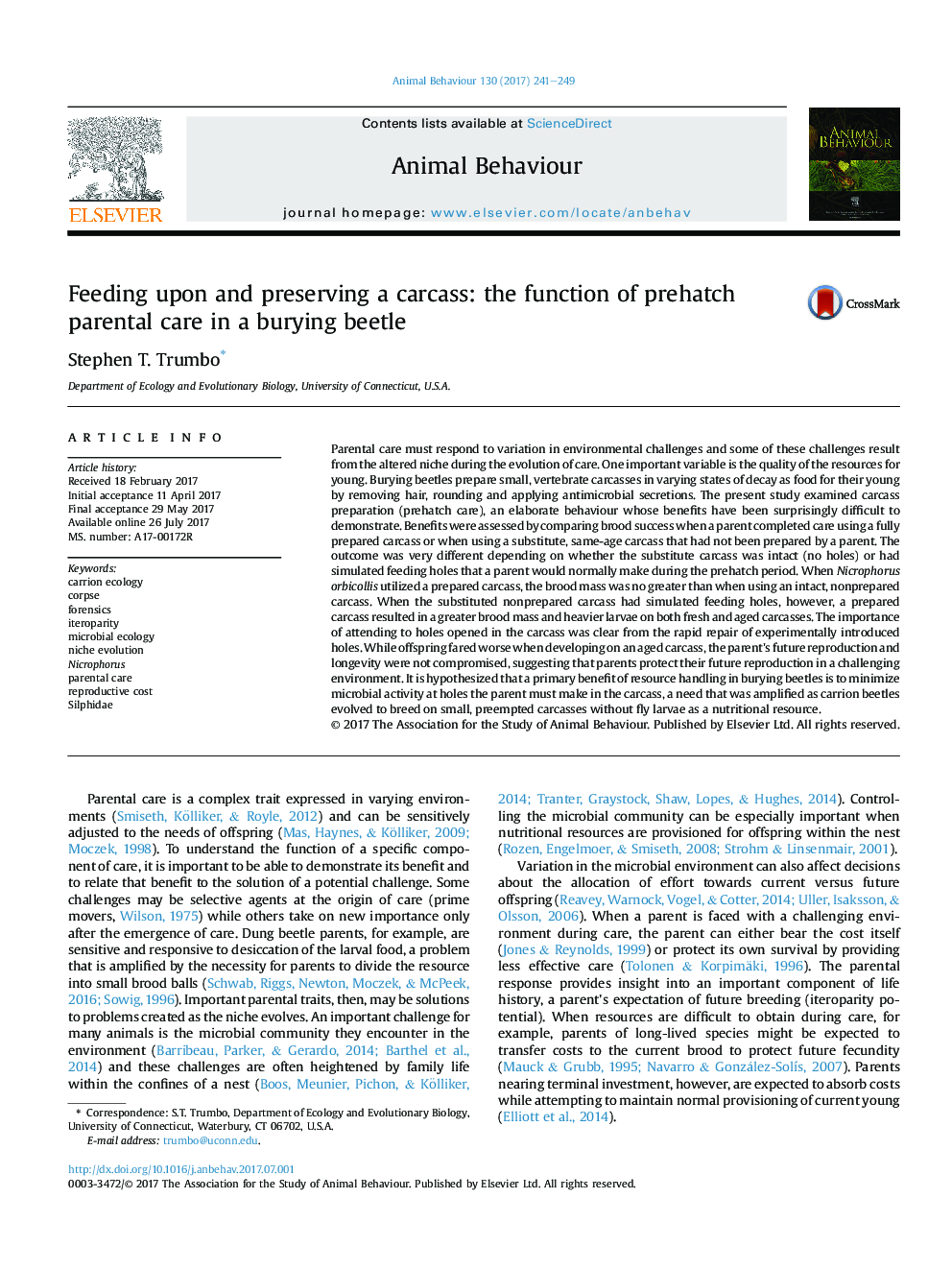| کد مقاله | کد نشریه | سال انتشار | مقاله انگلیسی | نسخه تمام متن |
|---|---|---|---|---|
| 5538421 | 1552198 | 2017 | 9 صفحه PDF | دانلود رایگان |
- A mouse carcass, like a human corpse, decays faster if opened.
- A burying beetle parent must open a carcass to feed.
- Burying beetles rapidly repair their feeding holes during carcass preparation.
- This prehatch care minimizes the potential decay caused by feeding holes.
- Prehatch care of carcasses increased conversion of resource to beetle mass.
Parental care must respond to variation in environmental challenges and some of these challenges result from the altered niche during the evolution of care. One important variable is the quality of the resources for young. Burying beetles prepare small, vertebrate carcasses in varying states of decay as food for their young by removing hair, rounding and applying antimicrobial secretions. The present study examined carcass preparation (prehatch care), an elaborate behaviour whose benefits have been surprisingly difficult to demonstrate. Benefits were assessed by comparing brood success when a parent completed care using a fully prepared carcass or when using a substitute, same-age carcass that had not been prepared by a parent. The outcome was very different depending on whether the substitute carcass was intact (no holes) or had simulated feeding holes that a parent would normally make during the prehatch period. When Nicrophorus orbicollis utilized a prepared carcass, the brood mass was no greater than when using an intact, nonprepared carcass. When the substituted nonprepared carcass had simulated feeding holes, however, a prepared carcass resulted in a greater brood mass and heavier larvae on both fresh and aged carcasses. The importance of attending to holes opened in the carcass was clear from the rapid repair of experimentally introduced holes. While offspring fared worse when developing on an aged carcass, the parent's future reproduction and longevity were not compromised, suggesting that parents protect their future reproduction in a challenging environment. It is hypothesized that a primary benefit of resource handling in burying beetles is to minimize microbial activity at holes the parent must make in the carcass, a need that was amplified as carrion beetles evolved to breed on small, preempted carcasses without fly larvae as a nutritional resource.
Journal: Animal Behaviour - Volume 130, August 2017, Pages 241-249
